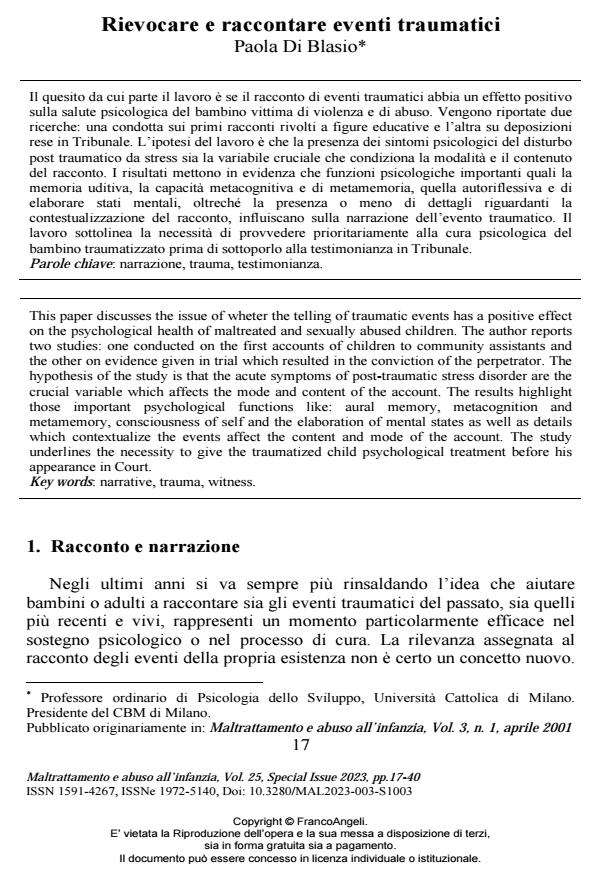Rievocare e raccontare eventi traumatici
Journal title MALTRATTAMENTO E ABUSO ALL’INFANZIA
Author/s Paola Di Blasio
Publishing Year 2024 Issue 2023/3 Suppl.
Language Italian Pages 23 P. 17-39 File size 228 KB
DOI 10.3280/MAL2023-003-S1003
DOI is like a bar code for intellectual property: to have more infomation
click here
Below, you can see the article first page
If you want to buy this article in PDF format, you can do it, following the instructions to buy download credits

FrancoAngeli is member of Publishers International Linking Association, Inc (PILA), a not-for-profit association which run the CrossRef service enabling links to and from online scholarly content.
This paper discusses the issue of wheter the telling of traumatic events has a positive effect on the psychological health of maltreated and sexually abused children. The author reports two studies: one conducted on the first accounts of children to community assistants and the other on evidence given in trial which resulted in the conviction of the perpetrator. The hypothesis of the study is that the acute symptoms of post-traumatic stress disorder are the crucial variable which affects the mode and content of the account. The results highlight those important psychological functions like: aural memory, metacognition and metamemory, consciousness of self and the elaboration of mental states as well as details which contextualize the events affect the content and mode of the account. The study underlines the necessity to give the traumatized child psychological treatment before his appearance in Court.
Keywords: narrative, trauma, witness.
Paola Di Blasio, Rievocare e raccontare eventi traumatici in "MALTRATTAMENTO E ABUSO ALL’INFANZIA" 3 Suppl./2023, pp 17-39, DOI: 10.3280/MAL2023-003-S1003